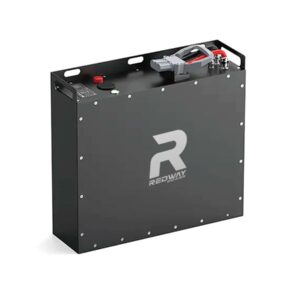What visual inspections should be performed on a battery?
Visual battery inspections should systematically check for corrosion, electrolyte leaks, casing cracks, terminal damage, and swelling. For lead-acid batteries, inspect vent caps and electrolyte levels; lithium-ion requires checking BMS wiring and cell bulging. Use PPE when examining high-voltage packs. Pro Tip: Document findings with timestamped photos to track degradation trends and warranty claims.
Optimal Forklift Battery Installation and Maintenance
Why is corrosion inspection critical for battery terminals?
Terminal corrosion (lead sulfate buildup in lead-acid, oxide layers in lithium) increases resistance, causing voltage drops and thermal risks. Blue/green deposits on copper lugs indicate acid vapor exposure. Pro Tip: Clean with baking soda solution (1:5 water ratio) and apply anti-oxidant grease post-inspection.

Beyond surface discoloration, measure terminal resistance using a micro-ohmmeter—values above 0.5mΩ signal urgent maintenance. For example, forklift batteries in humid warehouses often develop resistance hotspots, reducing efficiency by 15–20%. Transitioning to nickel-plated terminals can cut corrosion rates by 40%. But what if operators skip terminal torque checks? Loose connections accelerate arcing, potentially melting terminal shrouds. Always retorque to manufacturer specs (typically 8–12 Nm for M8 bolts) after cleaning.
| Battery Type | Corrosion Sign | Prevention Method |
|---|---|---|
| Lead-Acid | White crystalline deposits | Vent cap maintenance |
| LiFePO4 | Green copper oxidation | Dielectric grease application |
How to identify hazardous electrolyte leaks?
Electrolyte leaks appear as wet stains around vents/caps (lead-acid) or oily residues near cell seams (lithium). Use UV dye kits for hard-to-spot leaks in battery trays. Warning: Lithium salt deposits from leaked electrolytes are highly hygroscopic and can short adjacent cells.
Practically speaking, lead-acid leaks often stem from overfilled cells or cracked jars, while lithium leaks usually indicate damaged pouches/cylinders. In a recent case, a 48V golf cart battery failure was traced to microleaks in welded prismatic cell seams—only detectable via 10x magnification. Why risk ignoring minor dampness? Continuous electrolyte loss alters internal chemistry, accelerating plate sulfation in lead-acid and lithium dendrite growth. For VRLA batteries, swelling above 5mm confirms seal failure.
What casing damage compromises battery safety?
Cracks, punctures, or warping in battery enclosures expose internals to moisture/contaminants. For lithium packs, even 0.2mm cracks in aluminum casings permit dendrite-forming humidity ingress. Use straightedge tools to measure casing warpage exceeding 3mm/m length.
Moving beyond surface checks, inspect mounting brackets for stress fractures—common in EV batteries subjected to vibration. A study showed 60% of scooter battery fires originated from unobserved case cracks near mounting points. But how thin is too thin? Measure plastic case wall thickness with ultrasonic testers; replace if below 2.5mm (lead-acid) or 1.8mm (lithium). Pro Tip: Apply epoxy putty as temporary repair for field damage, but schedule full replacement within 30 days.
| Damage Type | Lead-Acid Risk | Lithium Risk |
|---|---|---|
| Top Case Crack | Acid mist emission | Dendrite formation |
| Base Warping | Plate buckling | Cell separator rupture |
Battery Expert Insight
FAQs
How often should visual inspections occur?
Industrial batteries: weekly. Consumer packs: monthly. After any impact/overcharge event—immediately. Document using checklists aligned with IEEE 450/IEC 61427 standards.
Can I tape over battery case cracks?
Only as emergency containment—tape doesn’t prevent gas/fluid egress. Replace damaged lithium cells within 72 hours; lead-acid jars require professional epoxy welding.
